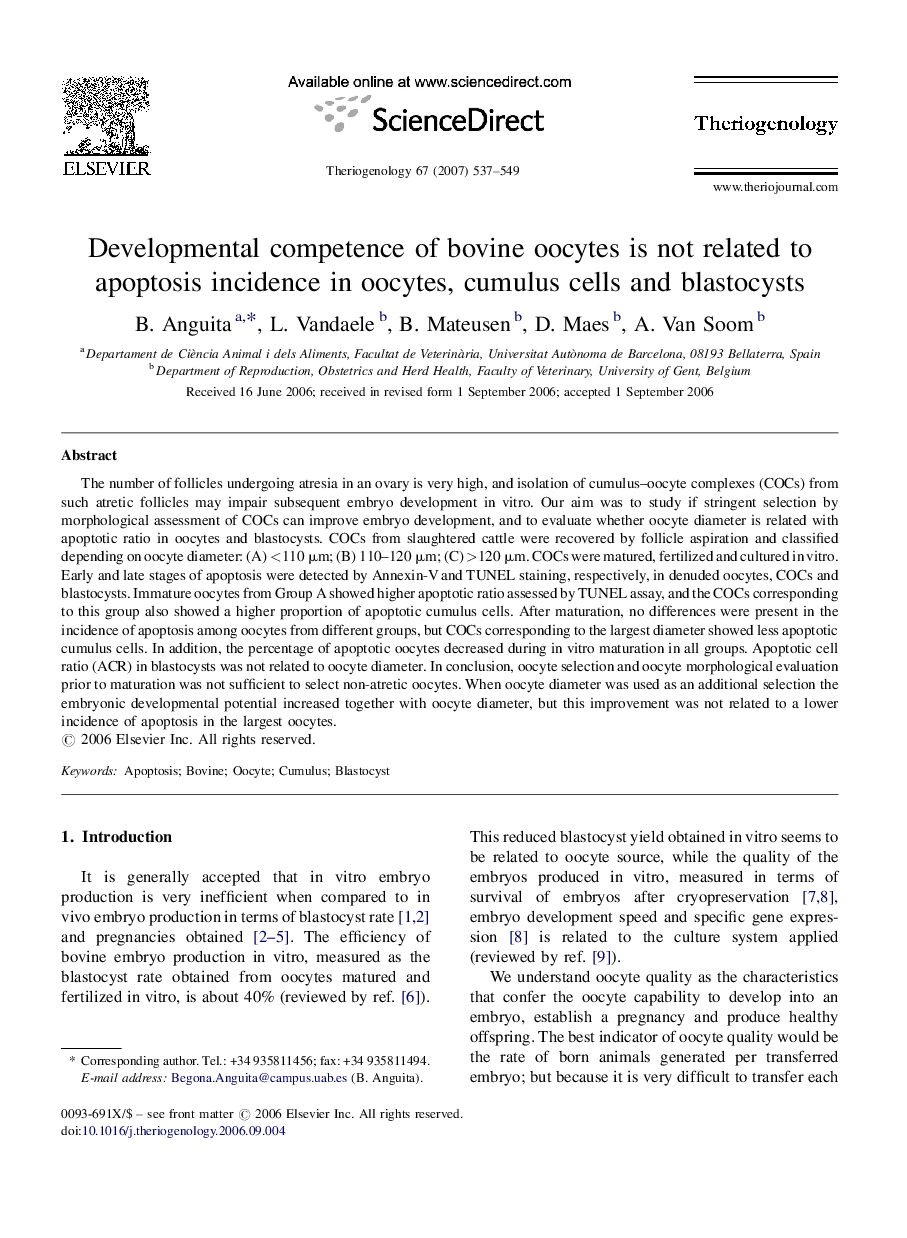| Article ID | Journal | Published Year | Pages | File Type |
|---|---|---|---|---|
| 2096518 | Theriogenology | 2007 | 13 Pages |
The number of follicles undergoing atresia in an ovary is very high, and isolation of cumulus–oocyte complexes (COCs) from such atretic follicles may impair subsequent embryo development in vitro. Our aim was to study if stringent selection by morphological assessment of COCs can improve embryo development, and to evaluate whether oocyte diameter is related with apoptotic ratio in oocytes and blastocysts. COCs from slaughtered cattle were recovered by follicle aspiration and classified depending on oocyte diameter: (A) <110 μm; (B) 110–120 μm; (C) >120 μm. COCs were matured, fertilized and cultured in vitro. Early and late stages of apoptosis were detected by Annexin-V and TUNEL staining, respectively, in denuded oocytes, COCs and blastocysts. Immature oocytes from Group A showed higher apoptotic ratio assessed by TUNEL assay, and the COCs corresponding to this group also showed a higher proportion of apoptotic cumulus cells. After maturation, no differences were present in the incidence of apoptosis among oocytes from different groups, but COCs corresponding to the largest diameter showed less apoptotic cumulus cells. In addition, the percentage of apoptotic oocytes decreased during in vitro maturation in all groups. Apoptotic cell ratio (ACR) in blastocysts was not related to oocyte diameter. In conclusion, oocyte selection and oocyte morphological evaluation prior to maturation was not sufficient to select non-atretic oocytes. When oocyte diameter was used as an additional selection the embryonic developmental potential increased together with oocyte diameter, but this improvement was not related to a lower incidence of apoptosis in the largest oocytes.
